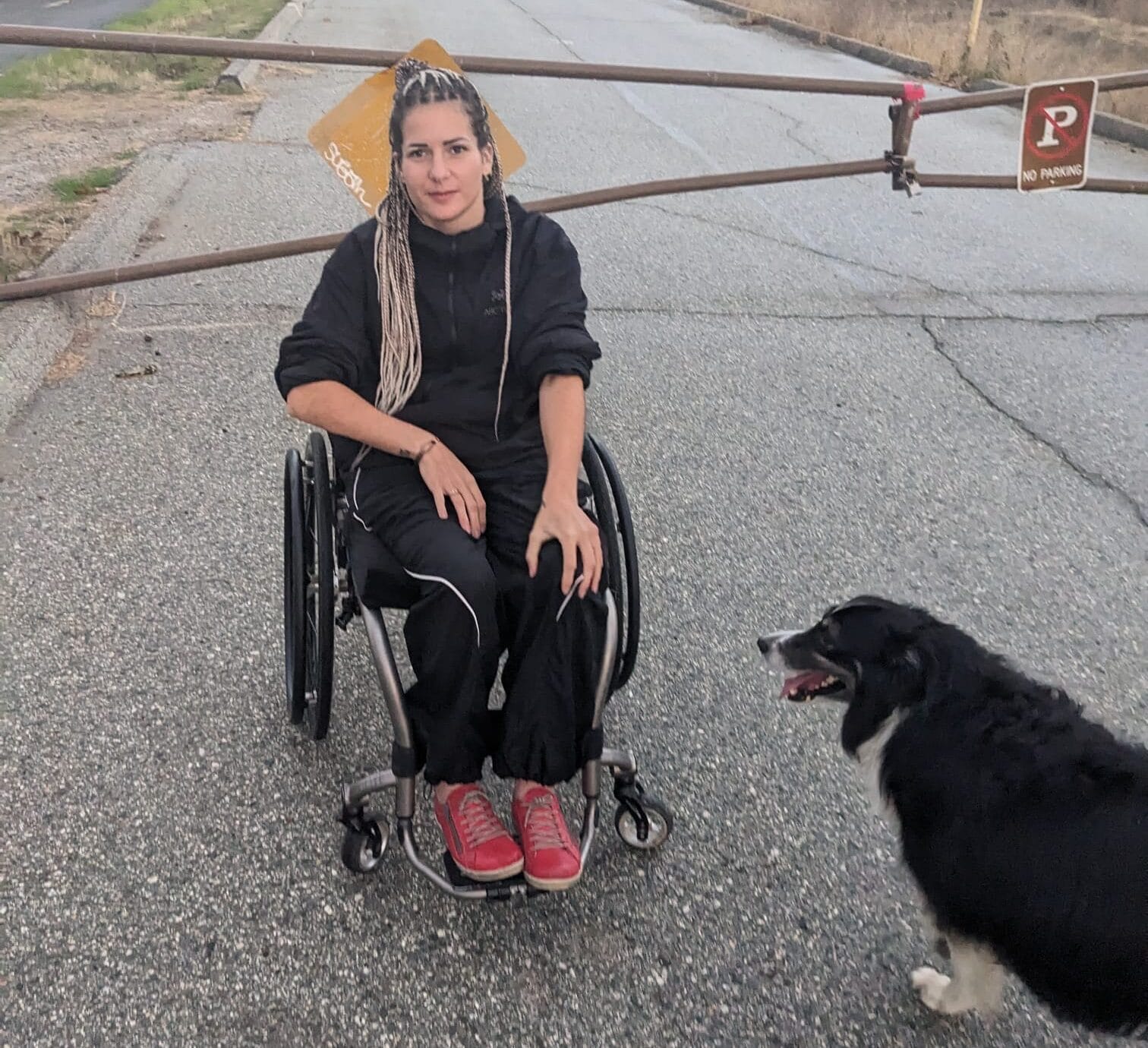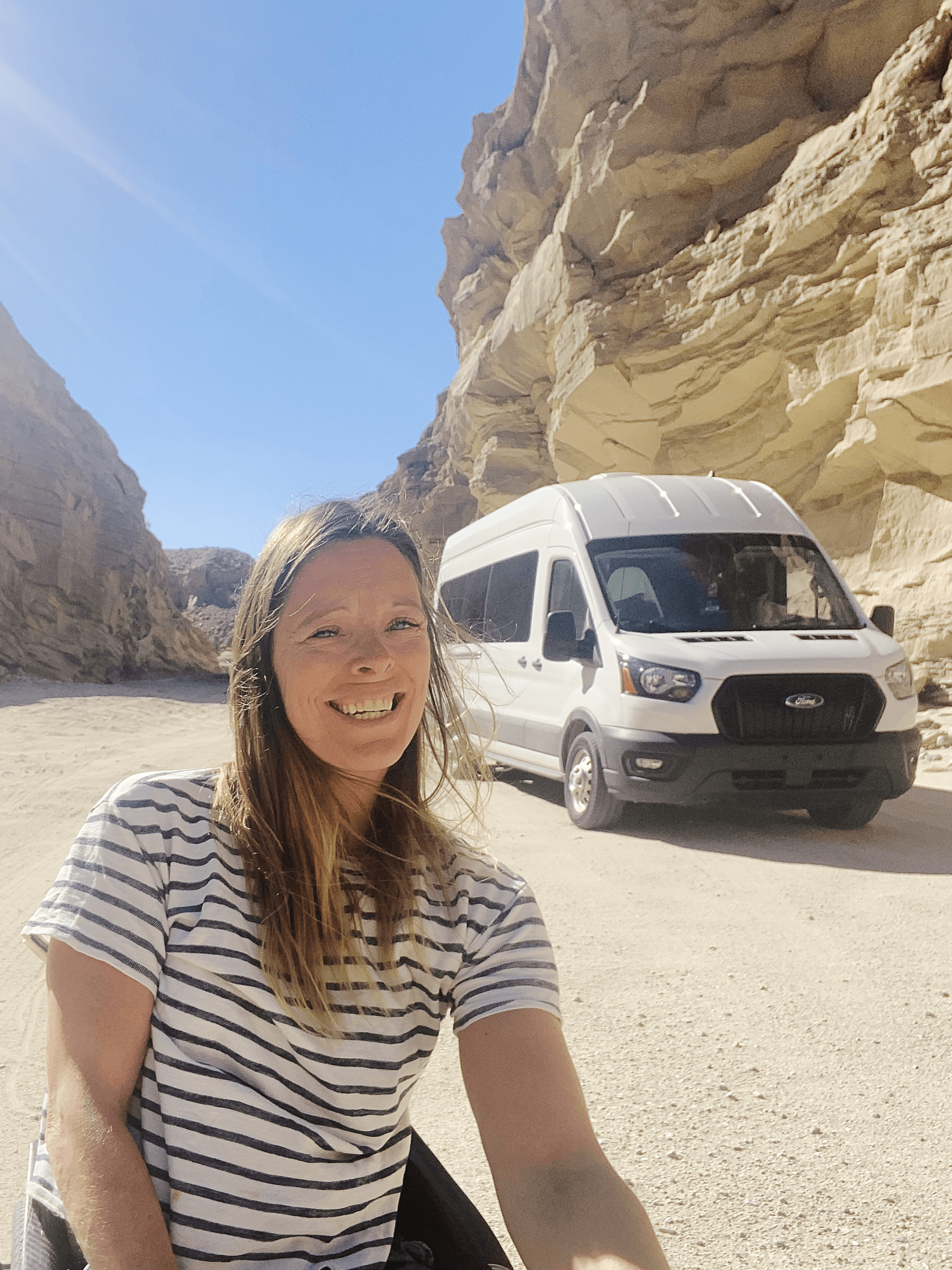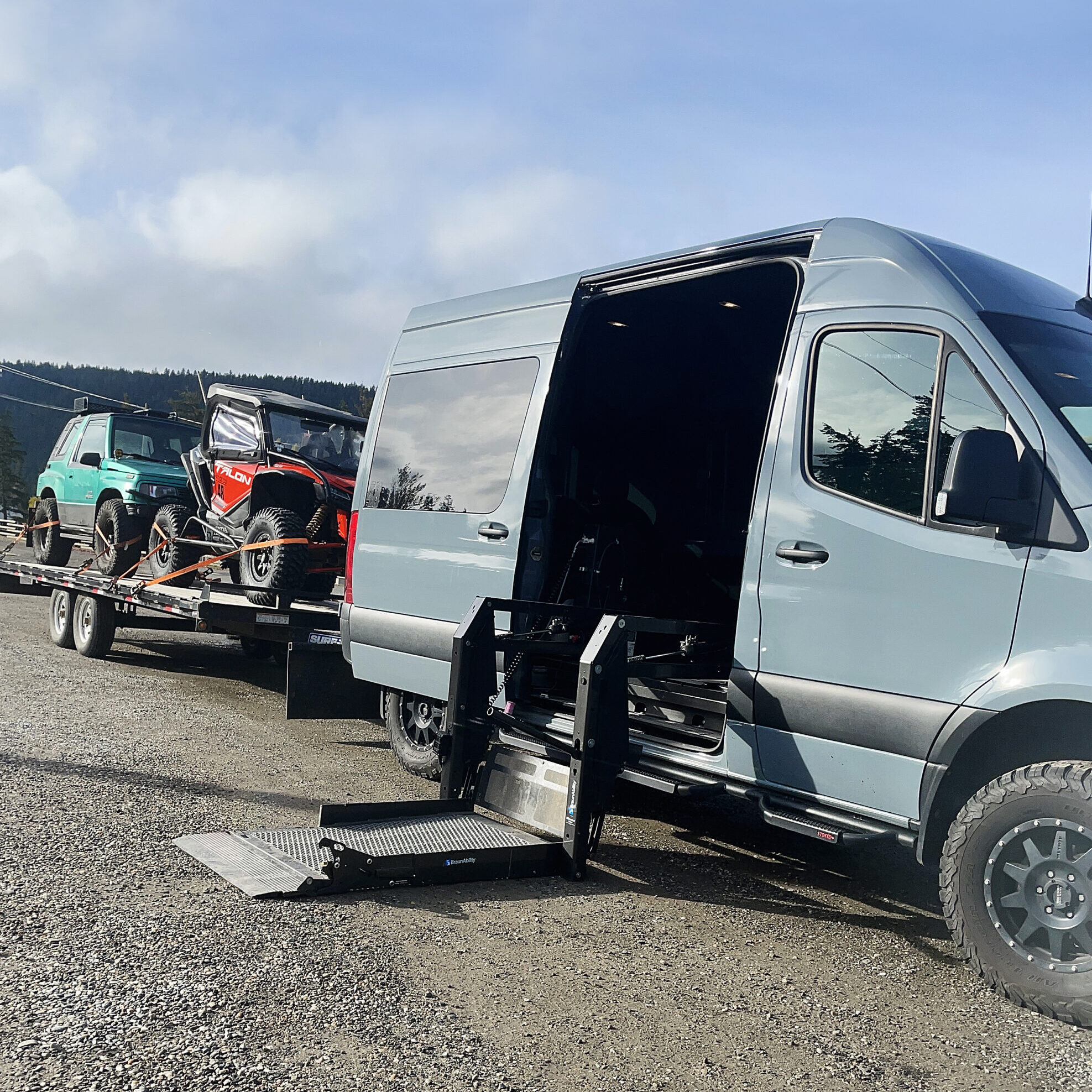
Like many SCI BC peers with quadriplegia, Brayden Methot’s return to driving after injury revolves around a van—after all, vans are really the only vehicle type that can be modified to include a wheelchair lift and offer the ability to drive from a chair using a lockdown system and hand controls.
But Methot’s van is unique among the thousands (or maybe tens of thousands) of modified vans in use on Canadian roads. In fact, his van literally stands head and shoulders above the field. That’s because it’s a Mercedes-Benz Sprinter—the first in Canada to be modified for use by a quadriplegic driver. And it’s not just any Sprinter—it’s a 4×4 with extra high ground clearance which, combined with the Sprinter’s already high raised roof, makes it about two feet taller than other vans on the road.
Mercedes-Benz debuted the first Sprinter models in 1995, throughout Europe. Since then, it’s become a common sight in North America. That van that delivers your Amazon packages? It’s probably a Sprinter. But while it’s still mainly used as nimble but spacious cargo and personnel transport vehicle, it’s being increasingly embraced for personal use, and many have discovered that it makes a great luxury van or RV.
Now it turns out that it can also be an excellent vehicle for someone with quadriplegia, as Methot has discovered— although not without considerable trial and error.
“My first van was a Toyota Sienna, but it just couldn’t do what I needed it to, being front-wheel-drive,” says Methot, who lives outside of Williams Lake in a rural setting with deep snow and poor road conditions a constant reality. “I had to do the Sprinter because it looked like the only option for four-wheel-drive. And I’m 6’1” and I straight up cannot fit in a regular size van from my power chair. Besides, it’s also nice to have a big-ass van to fit everybody in!”
The Sprinter did not, however, end up in Methot’s driveway overnight. In fact, it’s the culmination of a sometimes arduous eight-year journey, dating back to his stay in rehab. At that time, all he had was a loosely-formed plan to be driving something soon, even if it wasn’t on the road.
“I’ve always been huge into bikes,” he says. “And in the early days of my injury— like I’m talking in the first couple weeks—I told myself, ‘Well, at least I’m gonna have a bad ass side-by-side to ride with my friends and race.’”
So that’s what he set his sights on, reasoning an off-road side-by-side would allow him to return to the backcountry with his friends—and perhaps even help him prepare to get his driver’s license again someday.
Thus began his quest to find a side-byside that would work for him.
“The first one I had was a Polaris RZR 900,” he says. “It had hand controls in it, but I was never strong enough to drive it with its manual steering. Then I moved to a Polaris General, which was equipped with power steering. I gave it an honest shot with some custom hand controls and upgraded power steering. I could drive it a little bit, but the power steering would always cut in and out on me, and we never really did figure out a proper setup. It was super frustrating with lots of time and money invested.” Then he discovered the Honda Talon.
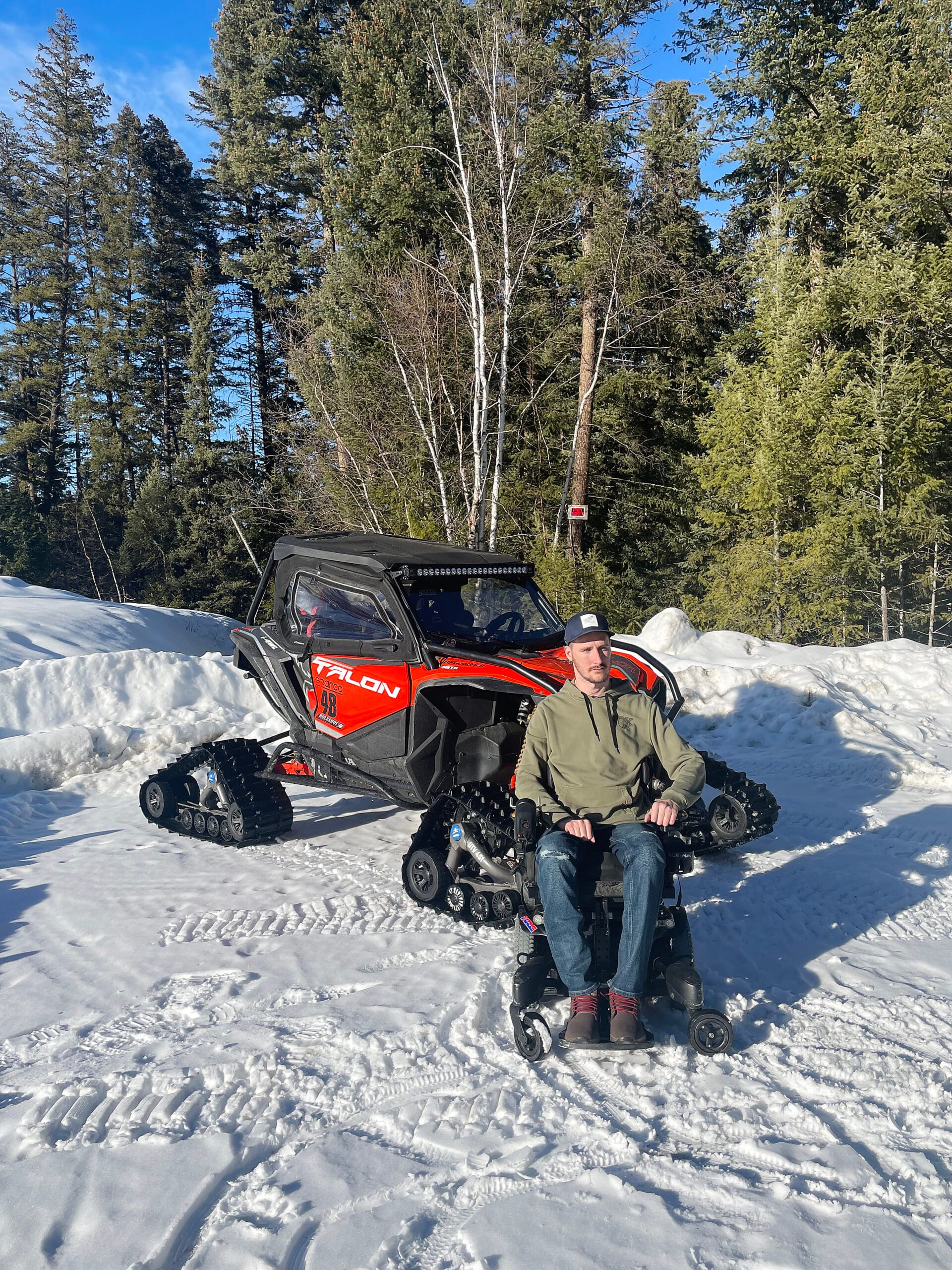
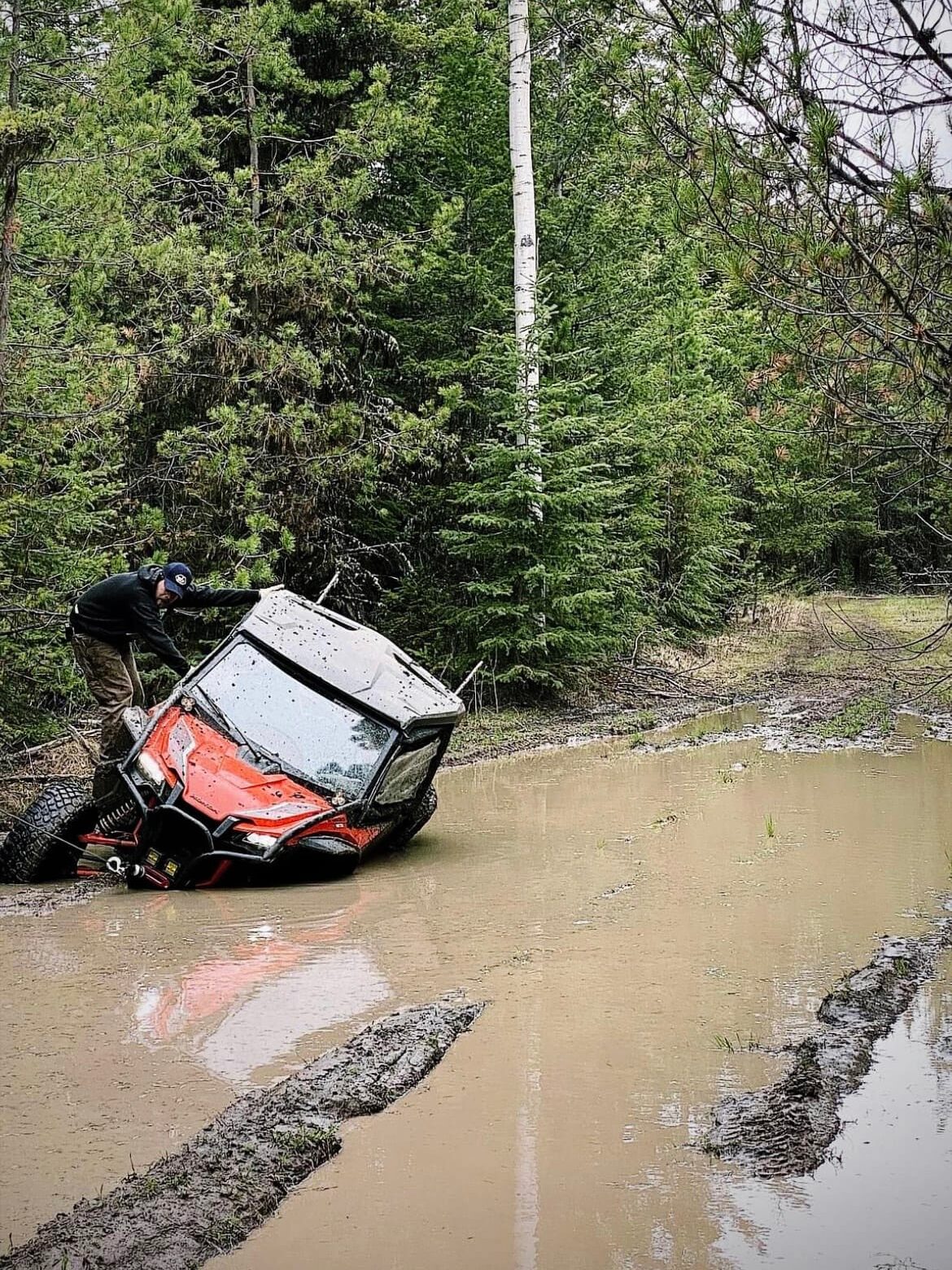
Right: Brayden and his Honda Talon. Left: The results of Brayden’s first ride.
“I moved to the Talon when my friend from my local bike shop told me it was the easiest steering wheel to turn that he’s seen,” says Methot. “So I went down there, duct-taped my hand to the steering wheel and could spin it, no problem.”
He had a custom deep bucket seat, harnesses and Sure Grip hand controls installed in his new Talon. He developed a routine to transfer into it (he slides the seat back as far as it can go, and gets a friend to lift him in). And soon he found himself ready to take it for a spin.
“The first ride was amazing—I was good at everything except for brakes,” he says with a chuckle. “We were only out for half an hour or so, and I was getting overconfident. I blew a corner, hit a tree and folded the radiator, so friends had to come and tow me back home that night.”
To this day, he drives the Talon constantly, rain, shine or even snow (as you can see in the photos, he equipped it with tracks this winter).
“I love it, despite all of the trial and error,” he says. “We have this thing dialed. I usually use it for weekend rides—sometimes we’re gone on big rides Saturday and Sunday checking out new locations out west, and sometimes it’s just a quick afternoon ride after work on a Wednesday. When we’re out, I am at no disadvantage to everybody else on these rides—I’m just as fast and enjoying the same ride that my friends are.”
This spring, Methot plans to get involved in local off-road races with the Talon.
But all along, he’s had a more serious use for the Talon. Along with tendon transfer surgeries and five-day-a-week workouts in his home gym, it’s been a great way for him to build his strength and fine-tune his driving skills in preparation to legally get back on the road.
His quest to regain his driver’s license began in earnest in 2018. That’s when he sold the Toyota he’d been considering modifying, and ordered a brand new, third generation 2019 Sprinter 2500 4×4 turbo diesel with an optional automatic sliding side entry door.
When it arrived in 2019, he began the extensive modifications needed to make it work for him. The van was first sent to Mahadev Wheelchair Accessible Vans in Richmond, where the floor was modified to make it possible for him to drive from his wheelchair. After that, it ended up at Alliance Mobility in Kelowna, where the wheelchair lift was installed.
That only left the control modifications themselves. But as Methot would discover, getting the controls vetted and installed ended up being a lengthy—and sometimes frustrating—process. Being that it was the first Sprinter in Canada to be modified this way, he understood that he would have to work with the fee-for-service Driver Rehab program at GF Strong to determine what control system was appropriate for him. But he was adamant that he wanted regular hand controls and steering, and not electronic joystick controls that many people with quadriplegia default to.
“I rode around as a passenger for probably six months to a year just doing assessments and tests to deem myself safe on the road,” he says. “They decided what controls I needed in the van, and then I was allowed to order them. All of the trial and error with my side-by-side is definitely what saved me when building the proper setup for the Sprinter. It’s maddening having someone at the driving clinic telling you what controls they think are gonna work best for you, especially when they don’t know your ability or have even met you before. A lot of the appointments were a complete waste of time, especially at GF Strong. There was no need to drive eight hours each way to do something that we could’ve done over the phone—and then be charged $1,200 for the appointment.”
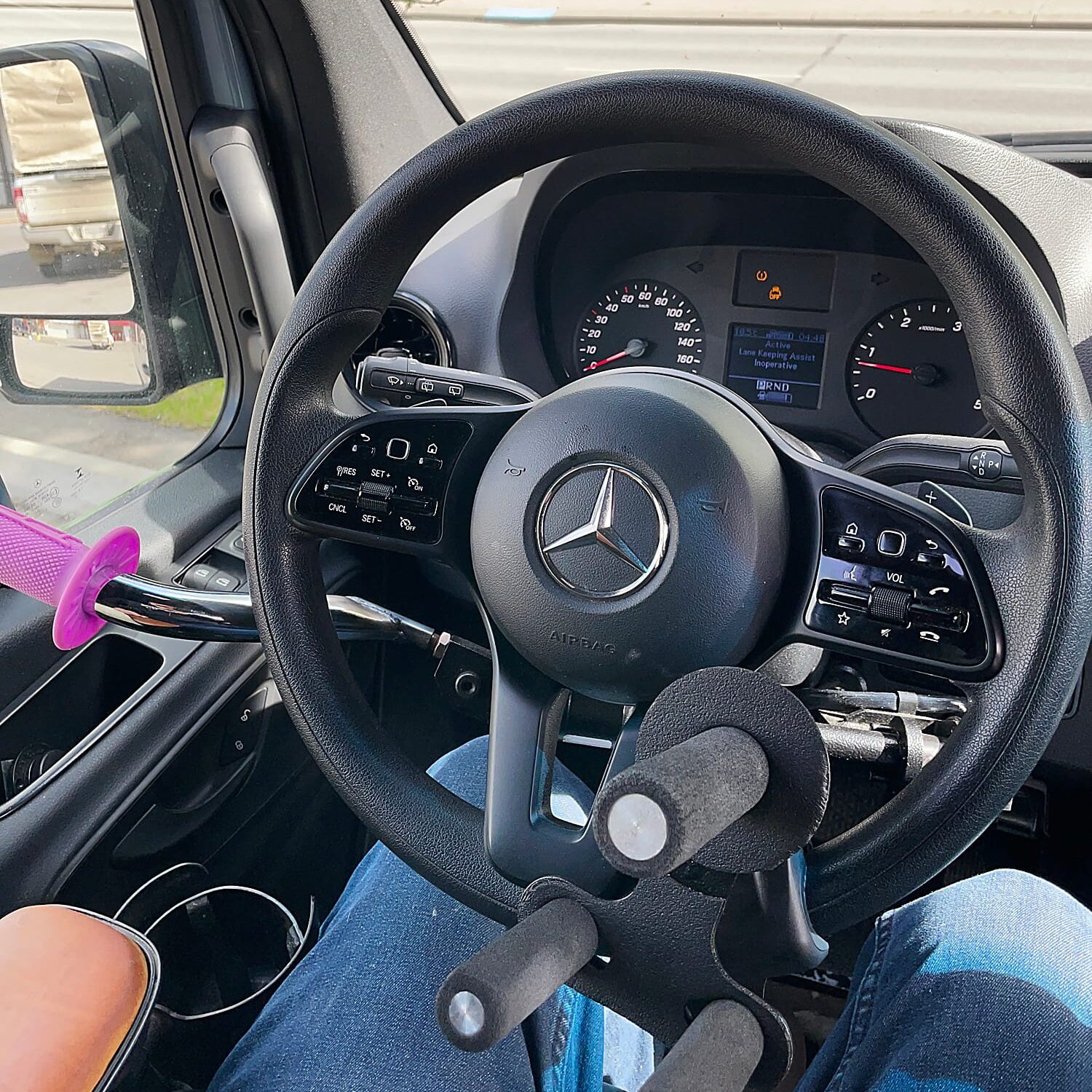
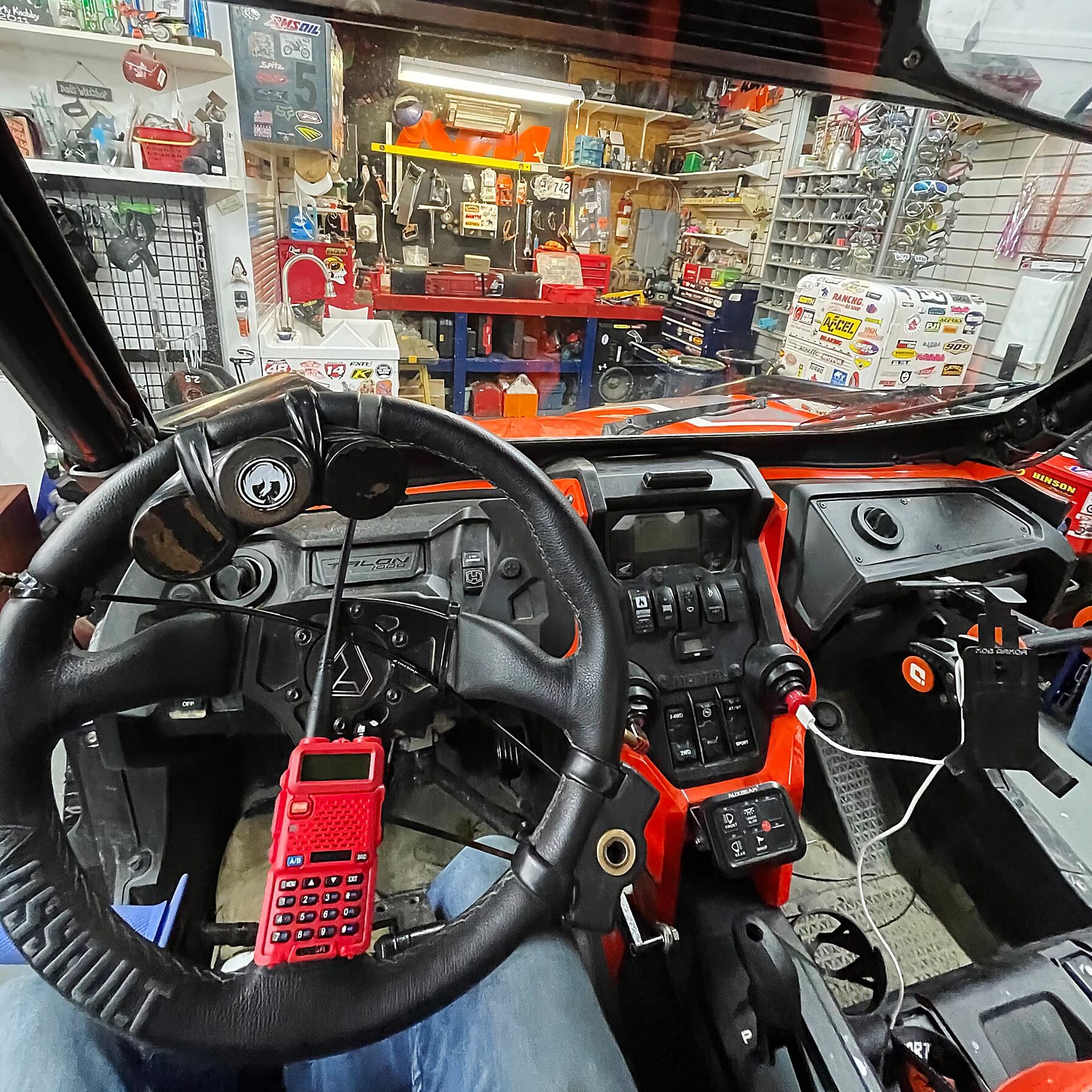
Driver’s seat view of the Sprinter (left) and the Talon (right).
He persevered, and eventually completed the process (which included a driving assessment in downtown Vancouver with a van he was completely unfamiliar with).
“I had to wait probably three years for them to finish testing and deem the Sprinter van safe to drive from my power chair,” says Methot.
At that point, he was given the green light to use low effort steering and standard push/rock hand controls with elbow switch signal buttons. The Sprinter went back to Alliance Mobility in Kelowna, where technicians sent the Sprinter’s steering pump to California to be modified for the low effort steering, and then completed the rest of the modifications.
But there was still a lot more work to do, and he would have to wait many more months to get his driver’s license.
“Once it was all modified, I had to practice driving for my final test, which would be in downtown Vernon, straight into rush-hour,” he says.
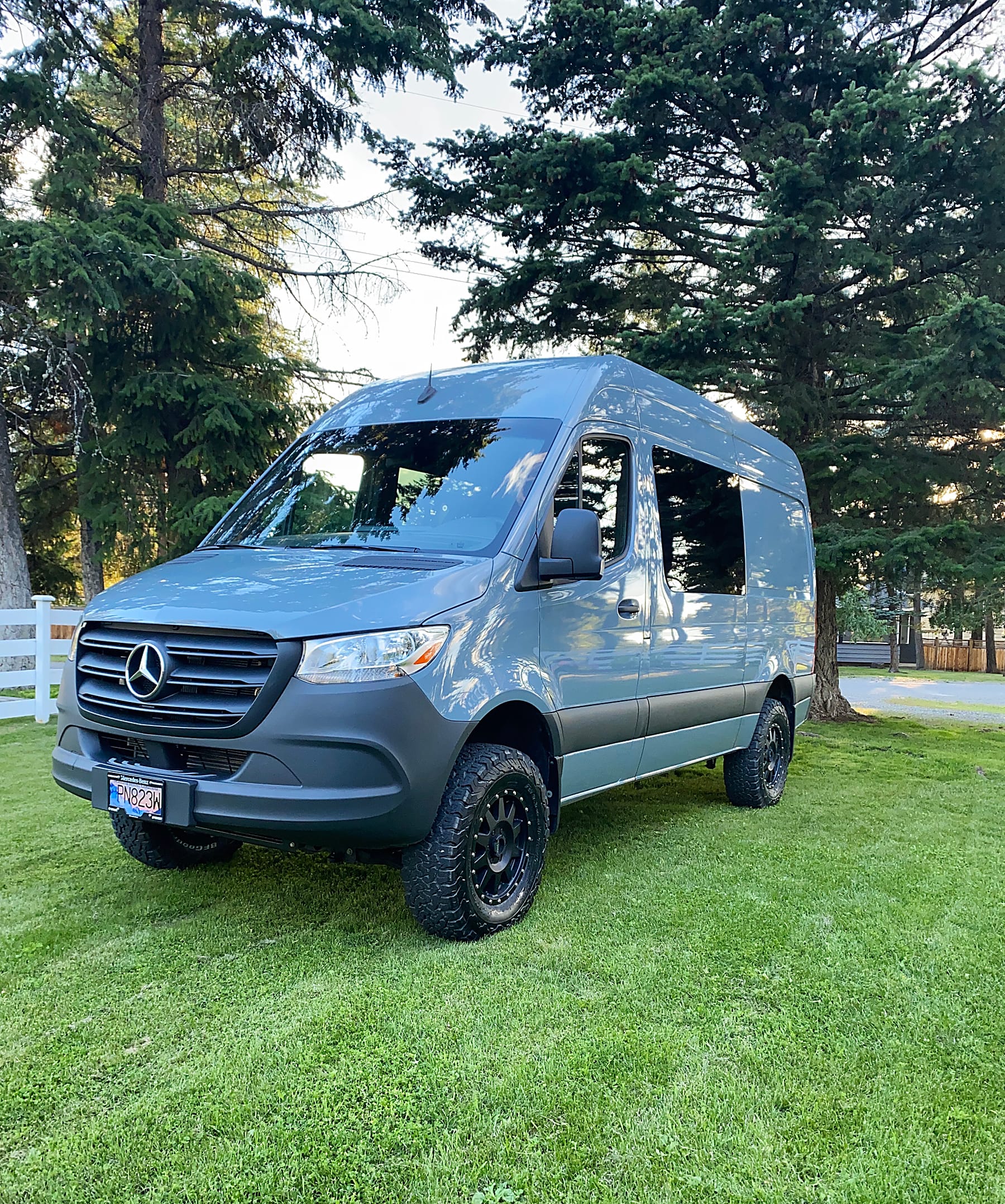
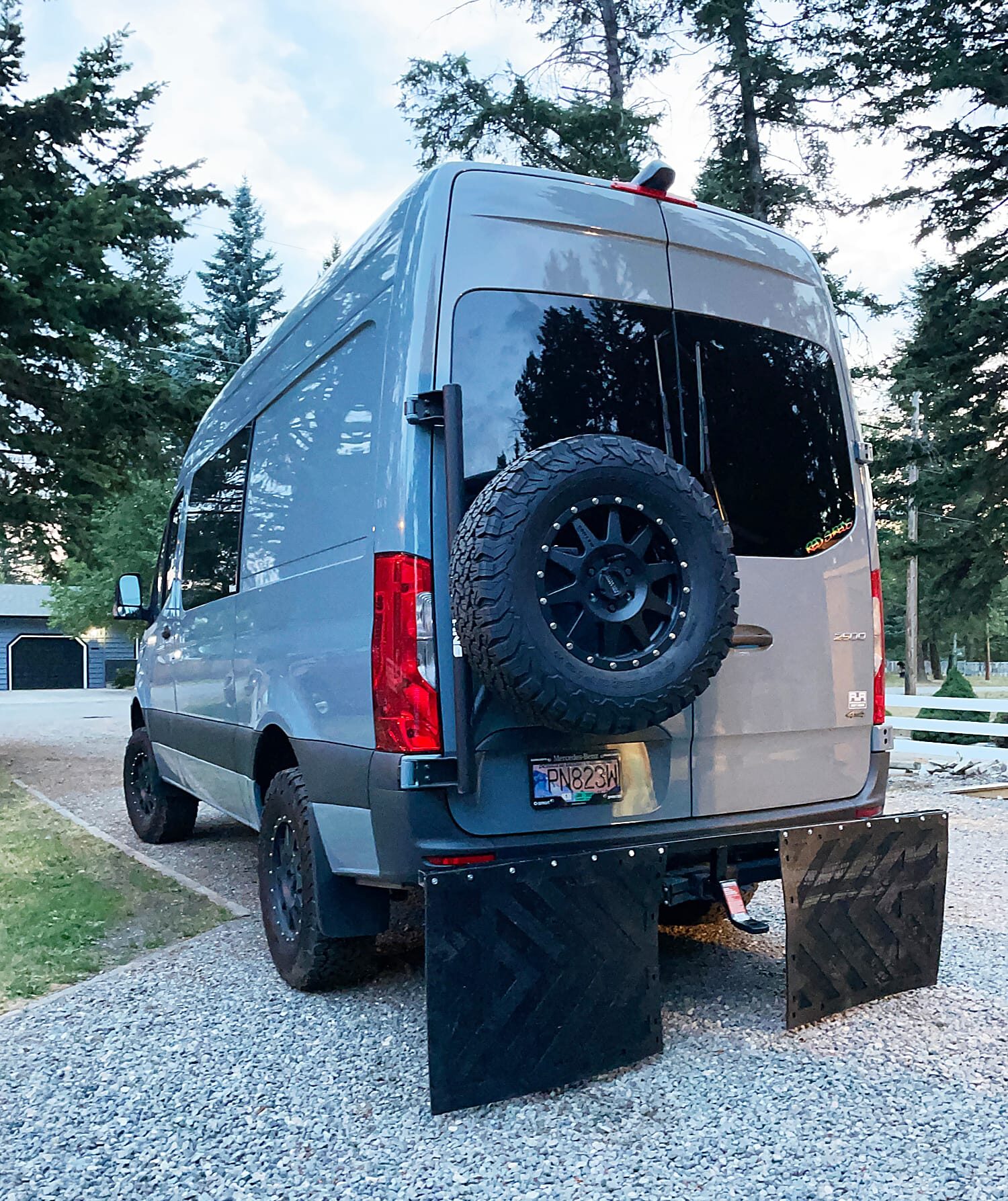
Brayden’s Sprinter van.
He finally became officially licensed last November.
“The test went pretty good,” he says. “I made sure that I was comfortable as possible so I wouldn’t have to do it twice.”
Since then, he’s been rediscovering the joy of driving, and says that the wait was worth it.
“It’s definitely a game changer,” he says. “I’m still working on the highway driving for long distances, but it’s coming back slowly. It’s pretty amazing to be able to take my dog out to the lake for the afternoon—you just miss the little things that most people take for granted, I guess.”
He says the Sprinter is close to perfect—it’s durable and strong. It allows him to visit friends on a whim, or haul his side-by-side out to the backcountry for a day of adventure. But he’s quick to point out that the effort he’s gone to wasn’t just about leisure.
At the time of his accident, he was working as a blaster at a coal mine north of Chetwyn. It was a job that he really enjoyed. He knows that he can’t return to that kind of work, but he’s eyeing alternatives.
“I’m planning to get back into the workforce finally, and make some money again,” he says. “I have a couple ideas locally that I could get back into and start filling up my days. We live a little ways out of town, so having a driver’s license is obviously crucial for work, among other things. Getting back behind the wheel has been super important—it took way longer than expected, but I just started chipping away at it and everything started to fall into place.”
This article was originally published in the Spring 2023 issue of The Spin. Read more stories from this issue, including:
- Testosterone Therapy
- Smoking Cessation
- Accessible Seaplane Services
And more!

